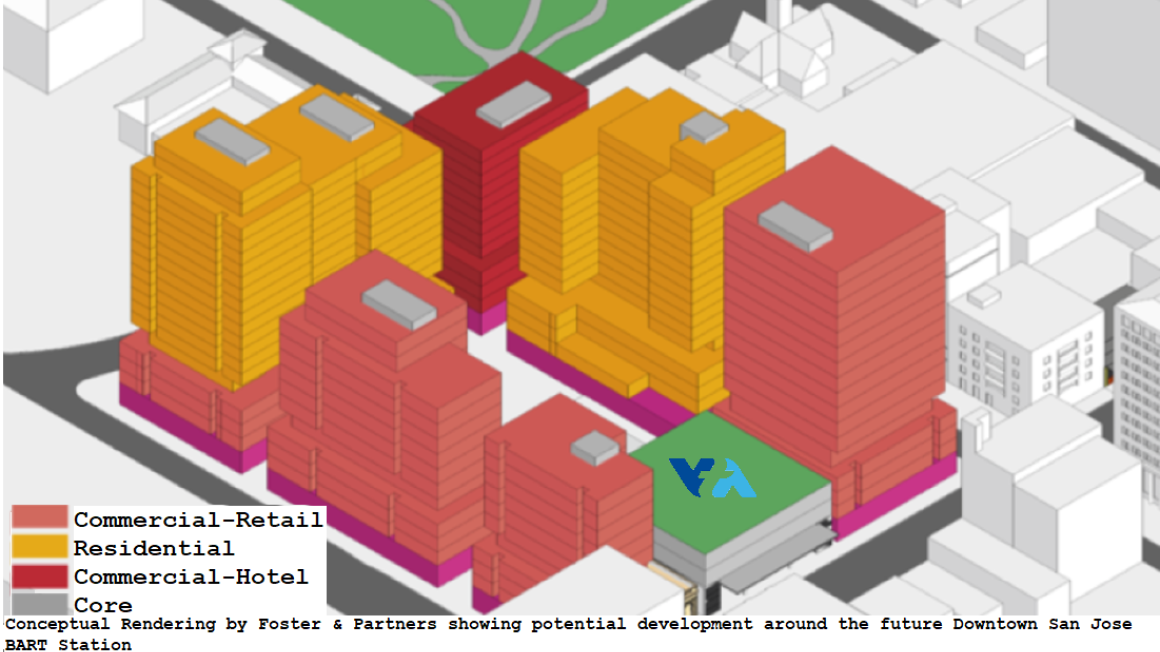SAN JOSE, CA – Today, the State of California awarded $375 million to the Santa Clara Valley Transportation Authority (VTA) for its BART extension into Downtown San Jose and Santa Clara.
This new award brings the state’s total commitment through the Transit and Intercity Rail Capital Program (TIRCP) to $1.125 billion. Last year’s state budget surplus made additional TIRCP funds available for transportation infrastructure projects throughout California. This infusion of funds is an important step for VTA to qualify for roughly $4.6 billion in a federal contribution, approximately 50% of the estimated project cost.
In addition to vast mobility and environmental benefits, the investment in the 6-mile, four station extension of the regional BART system brings a robust return on investment. The Project is expected to support approximately 75,000 jobs - including almost 43,000 jobs directly related to the project, and another 32,000 jobs nationwide tied indirectly or through the impacts of spending from the project. Direct employment supported by the project would result in over $3.5 billion in new labor income, with a total effect on labor income exceeding $5.6 billion. In addition, the project would also introduce approximately $6.3 billion in new GSP for California.
The Project also addresses pressing mobility, housing, and other concerns for overburdened residents in Santa Clara County and the broader Bay Area. It will serve residents of one of the most diverse regions of the country. The population in BART’s service area is over 60 percent people of color and almost 40 percent of Santa Clara County households earn less than $100,000 annually, resulting in more than one-third of residents being housing cost-burdened. Of the 18 census tracts within a half-mile of the four BSVII stations, five are Areas of Persistent Poverty, 17 are Historically Disadvantaged, 11 are Equity Priority Communities 13 are Low-Income, and five are Disadvantaged Communities
Other significant Project benefits include:
- Ringing the Bay with a one seat ride from San José and Santa Clara to destinations all around the Bay Area through frequent and reliable transit.
- Reducing construction impacts with an innovative single-bore method will minimize street level impacts and business interruption to the extent possible.
- Reduction of annual automobile vehicle miles traveled (VMT) by 137.1 million miles with an estimated reduction in carbon dioxide emissions 60.2 tons and greenhouse gas emissions by 33,036 tons per year by 2040.
- Spurring Transit Oriented Communities through a once in a century opportunity to create equitable and walkable places to live, work, shop, and play through compact, mixed-use development around transit.
In total, the four new BART stations are projected to have approximately 54,600 average weekday ridership in 2040, which represents 6.9 percent of total anticipated BART ridership, with a projected 27,900 daily ridership at the Downtown San José Station alone. The two stations adjacent to San Jose State and Santa Clara Universities are projected to serve over 5,600 university student trips per day, not including trips taken by staff and faculty.
Increasing transit options and improving mobility for all Santa Clara County and Bay Area residents and employees is a primary objective of the extension of BART service into the heart of Silicon Valley. The Metropolitan Transportation Commission’s (MTC) Plan Bay Area 2040 long range plan identifies the extension of BART service to San José and Santa Clara as the number one priority of the region for improving mobility. The Federal Government has authorized VTA to advance design on the project and begin certain activities. Early pre-construction activities are planned to start this Spring with major construction beginning next year.
